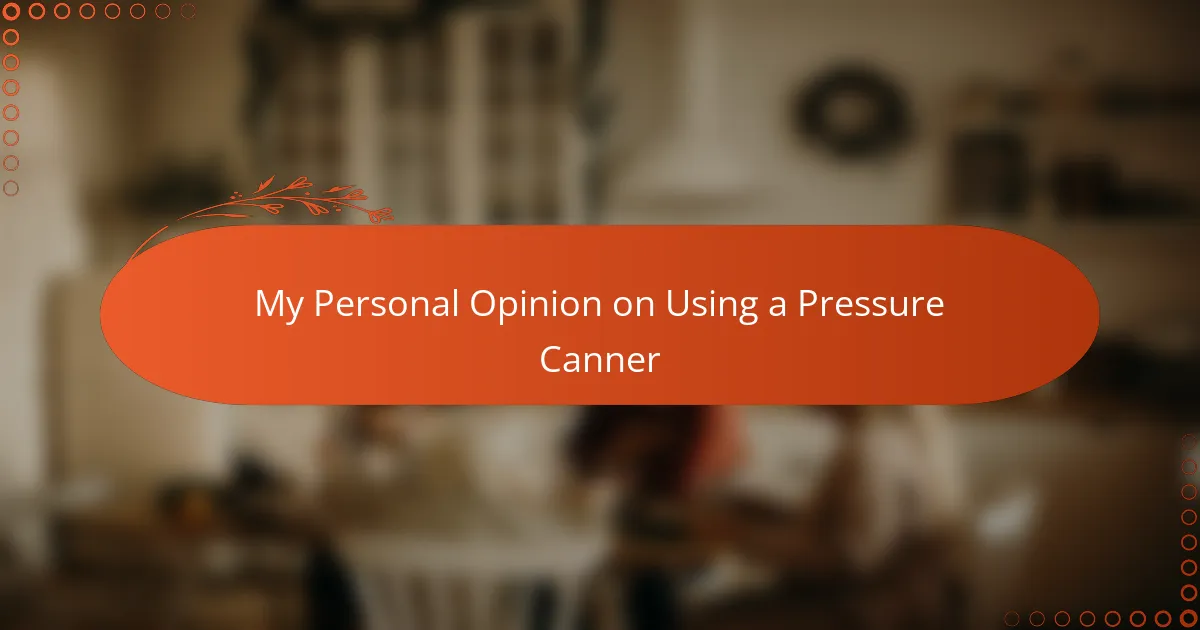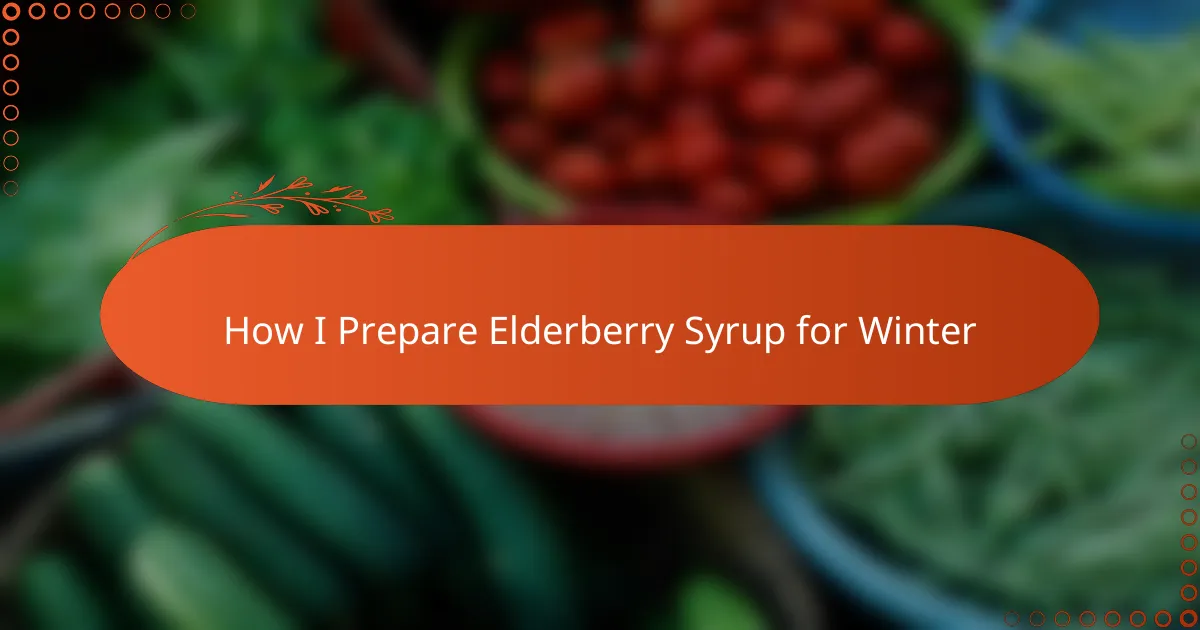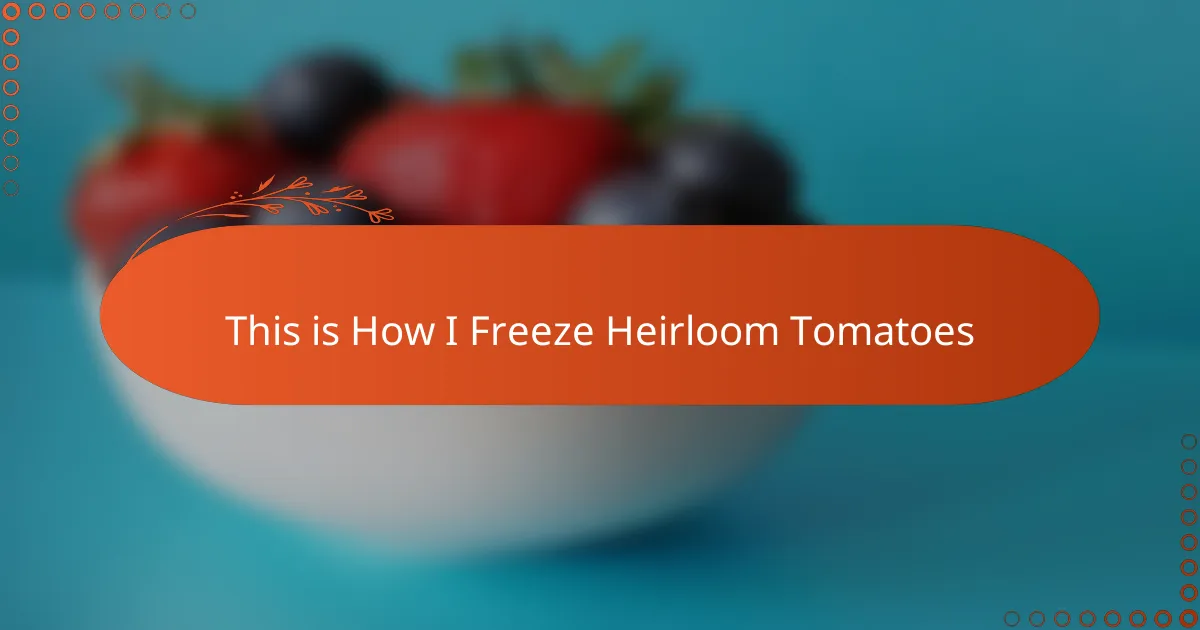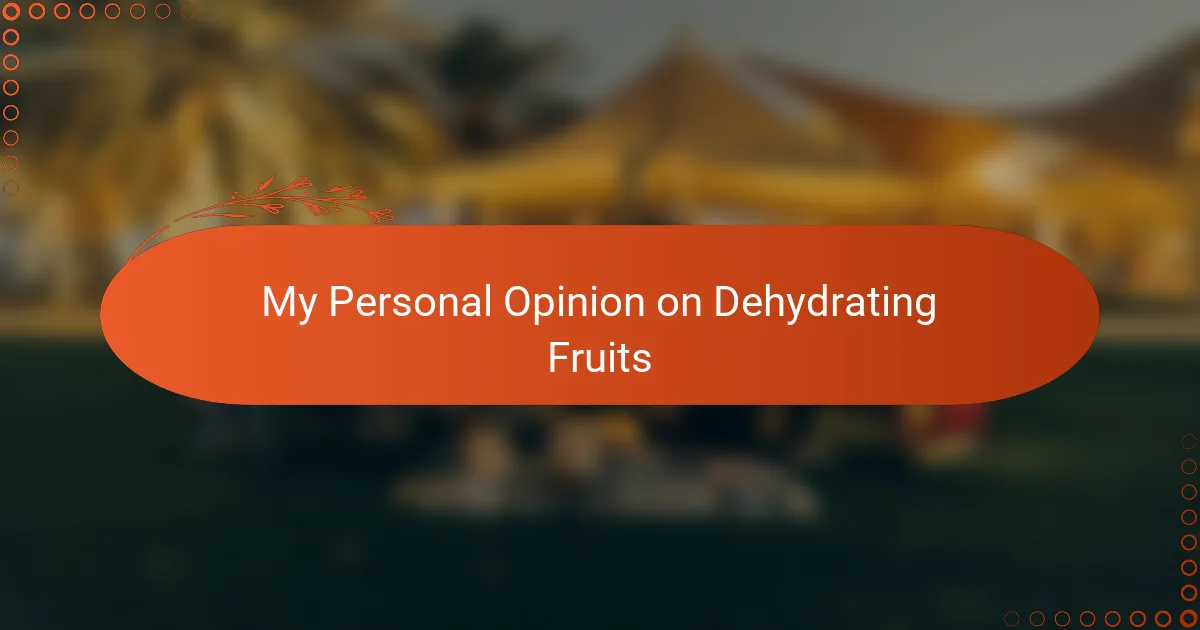Key takeaways
- Pressure canning is essential for preserving low-acid foods safely by achieving higher temperatures than boiling water.
- This method increases food preservation options, allowing for a wider variety of dishes, such as stews and soups, while saving time compared to traditional methods.
- Prioritize safety by checking the canner’s components, following the manual, and taking the time necessary to ensure proper sealing.
- Common issues like inconsistent pressure or sealing failures can often be resolved by paying attention to detail and following recipe guidelines closely.
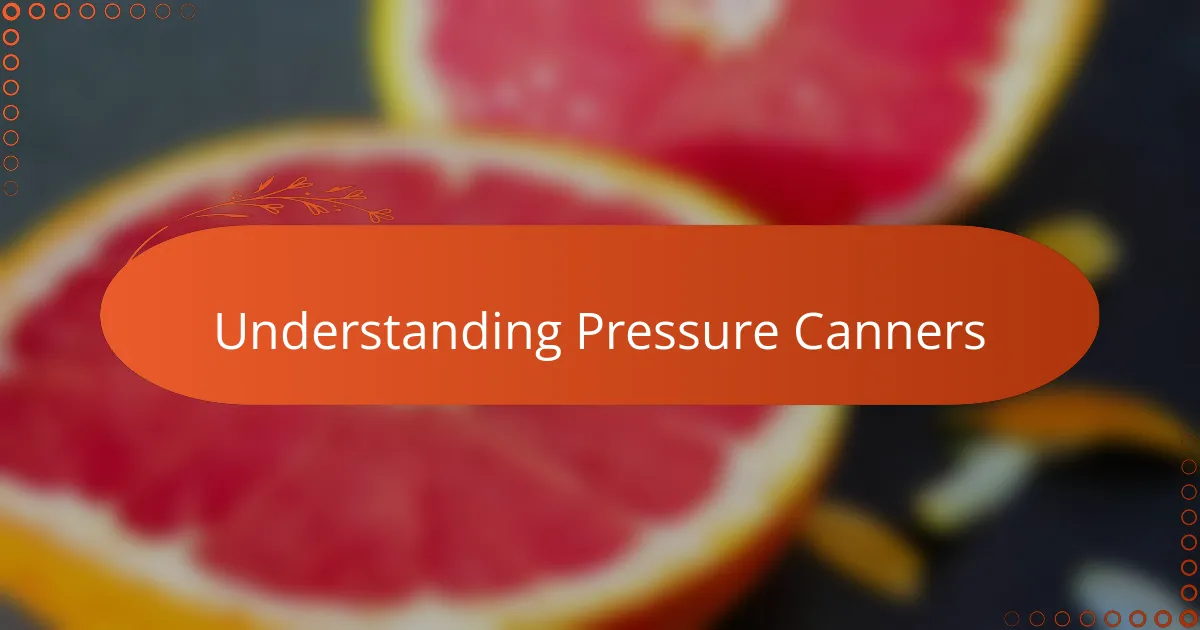
Understanding Pressure Canners
When I first encountered a pressure canner, I was honestly a bit intimidated by its bulky design and the way it hissed under pressure. But understanding how it works changed my perspective completely. It’s essentially a sealed pot that uses high steam pressure to reach temperatures above boiling water, which is crucial for safely preserving low-acid foods like beans and meats.
Have you ever wondered why regular boiling water baths aren’t enough for some home canning? This question had me curious for weeks until I realized the science behind it. Pressure canners eliminate bacteria-spoiling threats by achieving temperatures that boiling alone can’t provide, making them a reliable choice for anyone serious about food safety.
Through my experience, I’ve learned that getting familiar with the pressure settings and device locks makes the whole process feel less like a mystery. It’s empowering to see how such a simple concept—trapping steam to increase heat—can keep your homemade jams and stews safe for months. Understanding this tool not only boosted my confidence but also deepened my appreciation for traditional food preservation methods.
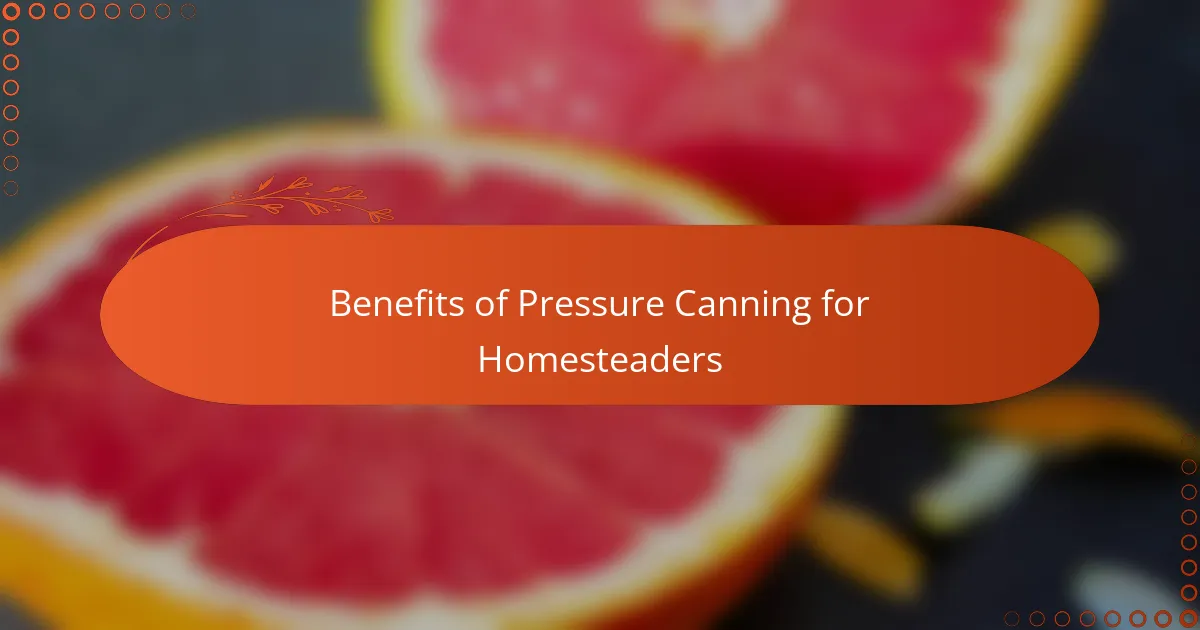
Benefits of Pressure Canning for Homesteaders
One of the biggest benefits I’ve found with pressure canning is the sense of security it gives. Knowing that my homegrown beans and fresh vegetables are sealed safely without the risk of spoilage feels incredibly reassuring. Have you ever hesitated to preserve something because you worried it might not last? Pressure canning tackles that worry head-on.
Another advantage is the time-saving aspect. While it might seem like a lengthy setup at first, pressure canning actually speeds up the preservation process compared to traditional water baths. I remember how surprised I was the first time I sealed a batch of chili in less than an hour—something that would typically take much longer using other methods.
Plus, pressure canners open up possibilities to preserve a wider variety of foods. From hearty stews to rich stocks, this method handles low-acid foods that water bath canning just can’t. It’s like gaining a whole new skill set that helps stretch what I grow on my homestead throughout the year. Don’t you love it when a single tool widens your cooking and storage options this much?
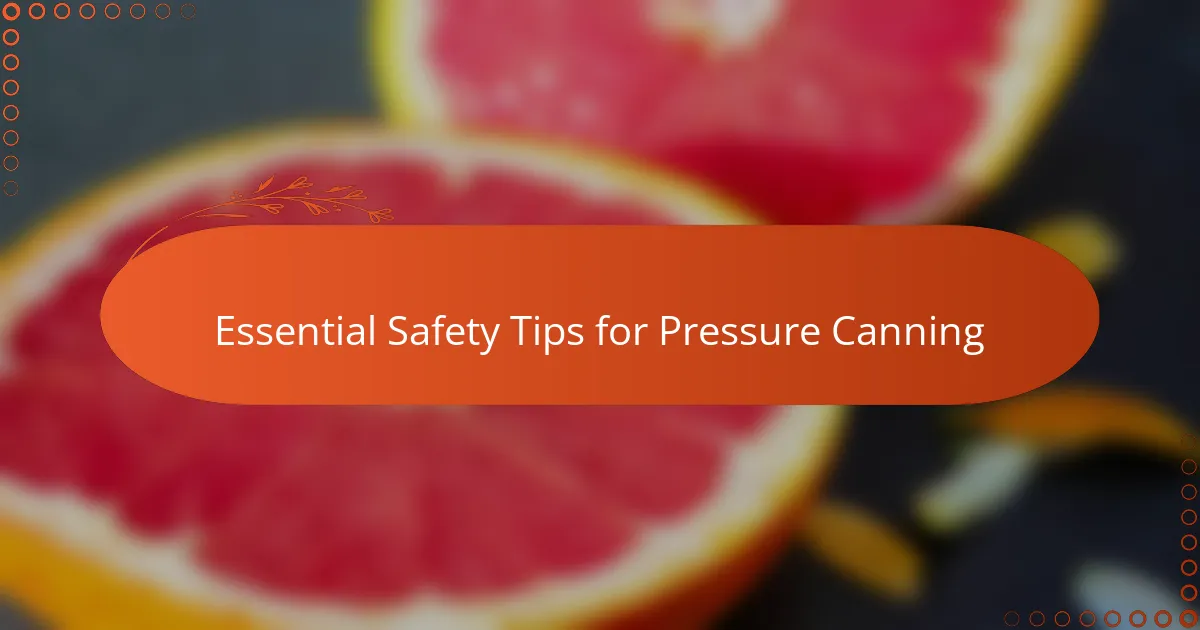
Essential Safety Tips for Pressure Canning
One key safety tip I always follow is never rushing the process. It might be tempting to cut corners, especially when you’re eager to get those jars sealed, but pressure canning demands patience. Have you ever tried to speed up a recipe only to have it flop? With pressure canning, taking your time ensures the food reaches the right temperature for a safe seal.
Another thing I’ve learned the hard way is to always check the gasket and vent pipe before starting. On one occasion, I discovered the rubber gasket was cracked just before use, and replacing it saved me from a potential disaster. Small parts like these are often overlooked, yet they’re vital for maintaining proper pressure and preventing accidents.
Finally, I can’t stress enough the importance of following your canner’s manual to the letter. Early on, I thought I could improvise settings or adjust times based on what “felt” right. That led to inconsistent results and a few failed batches. Pressure canners aren’t one-size-fits-all; trusting the guidelines keeps both your food and you safe. Have you encountered surprises while experimenting with canning times? It’s a lesson I learned firsthand and won’t forget.
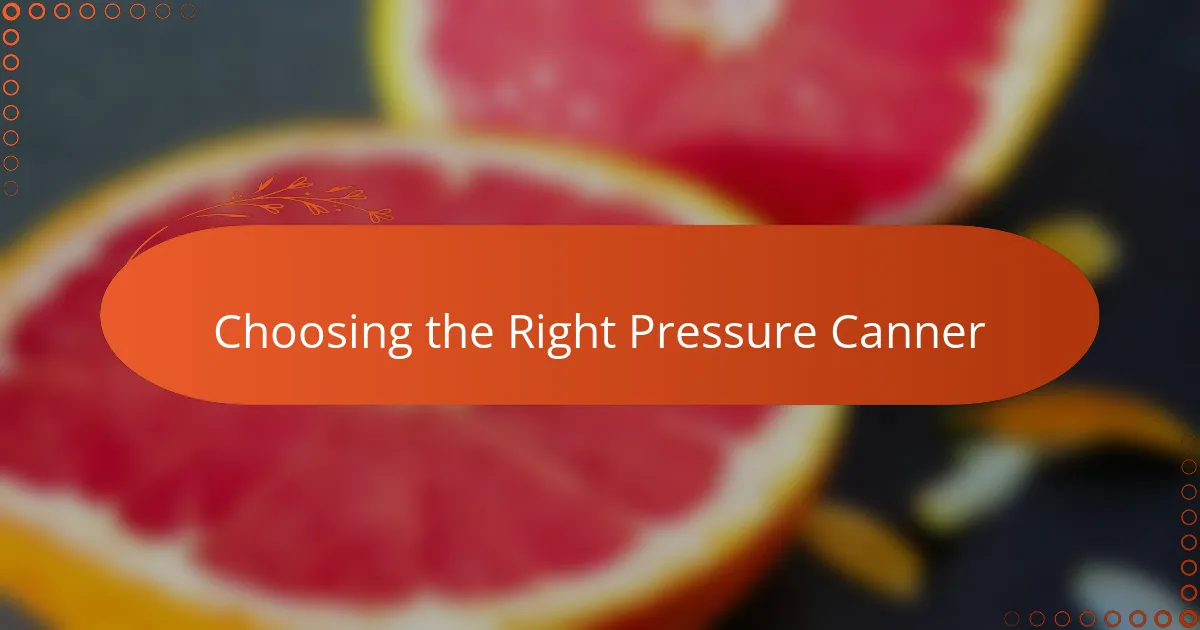
Choosing the Right Pressure Canner
Choosing the right pressure canner felt overwhelming at first—I wasn’t sure whether to go for a weighted gauge or a dial gauge model. What helped me decide was thinking about how often I’d use it and the kind of foods I wanted to preserve. If you’re like me and plan to can frequently, investing in a dial gauge canner offers more precise control, which made a big difference in my confidence during canning sessions.
Another thing I learned is size really matters. Starting with a medium-sized canner seemed practical, but as my garden grew, so did my need for a larger capacity. Have you noticed how quickly a few jars can add up when preserving seasonal harvests? Picking the right size from the beginning can save a lot of hassle and allow you to batch can efficiently without feeling cramped.
Safety was also a major factor in my choice. I made sure the canner I bought had easy-to-read pressure indicators and well-documented instructions—because if there’s one thing that can’t be compromised, it’s peace of mind. Don’t you think it’s worth being extra cautious when dealing with high pressure? Knowing my canner’s safety features helped me relax and enjoy the process rather than worry about potential mishaps.
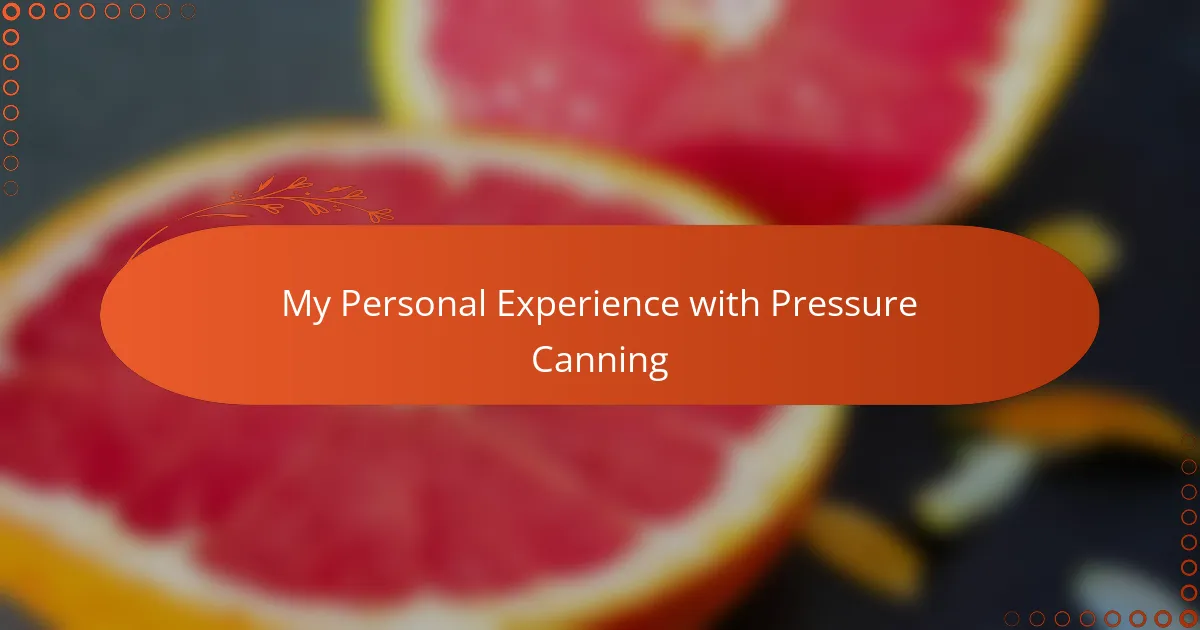
My Personal Experience with Pressure Canning
I remember my very first pressure canning session vividly—there was this mix of excitement and nervousness bubbling up as I patiently watched the gauge climb. Have you ever felt that anticipation, hoping that all your prepping and sealing would pay off? When the timer finally rang and I opened the canner to see perfectly sealed jars, it was a small victory that made all the effort worthwhile.
Over time, my experience taught me that pressure canning isn’t just about following steps blindly; it’s about learning the rhythm of the process and trusting the equipment. I’ve had moments of doubt—for instance, wondering if the pressure was steady enough or if I sealed the lids just right. But each jar that safely stored my harvest reinforced my confidence, making me feel more connected to what I’m preserving.
Of course, not every batch was flawless. Once, I overlooked a tiny crack in the gasket and ended up with under-processed food, which was a tough lesson. Have you ever faced a setback that pushed you to be more meticulous? That mistake made me double-check everything before starting and deepened my respect for the precision pressure canning demands. It’s a bit like a dance—once you learn the steps, it flows smoothly and with peace of mind.
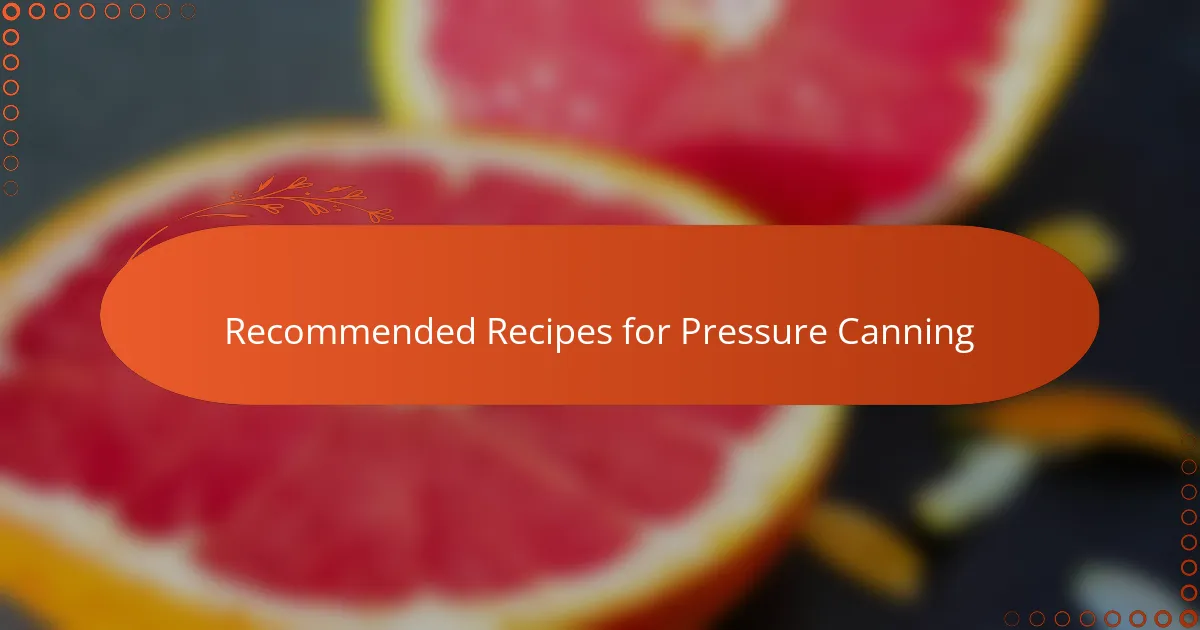
Recommended Recipes for Pressure Canning
When it comes to recipes that work best with pressure canning, I tend to reach for hearty, low-acid dishes like beef stews, vegetable soups, and dried beans. Have you ever tried canning chili or homemade tomato sauce with added meat? Those recipes transformed completely when I used my pressure canner, preserving flavors and textures in a way water baths just couldn’t match.
One surprising favorite I discovered was canning homemade chicken stock. The rich, savory broth sealed perfectly, ready to flavor meals throughout the winter. It’s such a comfort knowing I can open a jar anytime and have a taste of homegrown goodness—doesn’t that make all the effort feel worth it?
For those just starting out, I’d recommend trying simple vegetable soups or bean mixes. These recipes are forgiving and showcase the canner’s ability to lock in freshness and nutrients. Plus, experimenting with these basics gave me the confidence to branch out into more complex meals over time. What fun it is to turn your garden harvest into ready-to-eat meals in a jar?
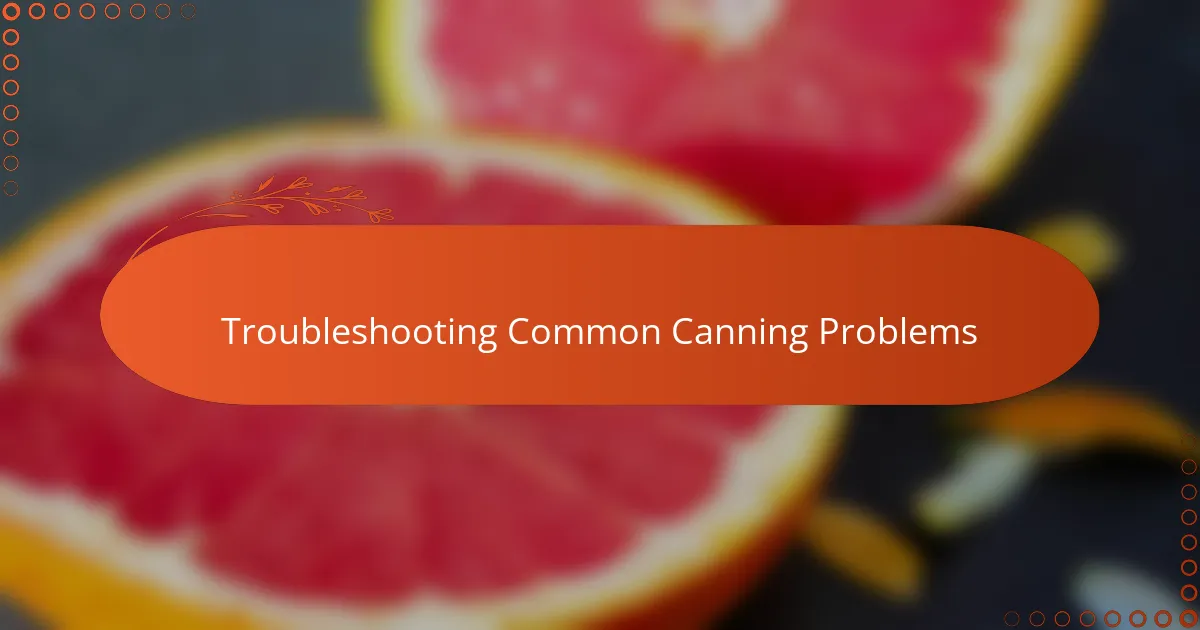
Troubleshooting Common Canning Problems
Troubleshooting pressure canning problems can feel frustrating at first, especially when you’re eager to see those jars seal perfectly. I recall a time when my jars wouldn’t seal properly, and it turned out I hadn’t wiped the rim clean before placing the lid—such a simple step, yet so easy to overlook. Have you ever experienced a batch that just wouldn’t seal no matter what? It taught me that attention to small details makes all the difference.
Another challenge I often encountered was inconsistent pressure readings. Sometimes the gauge would fluctuate, making me second-guess whether the process was safe. I learned that these fluctuations often come from clogged vent pipes or improper venting at the start—issues that are easy to fix once you know what to watch for. Do you find it tricky to maintain a steady pressure? Keeping the vent pipe clear became one of my essential habits.
Lastly, spoilage and jar breakage were problems I faced early on, which felt like a waste of time and effort. Overfilling jars or not allowing enough headspace was my culprit. Adjusting jar fill levels according to recipe instructions made a big difference in avoiding both leaks and broken glass. Have you noticed how small missteps can create bigger issues? That realization shifted my approach to canning from guesswork to careful precision.
